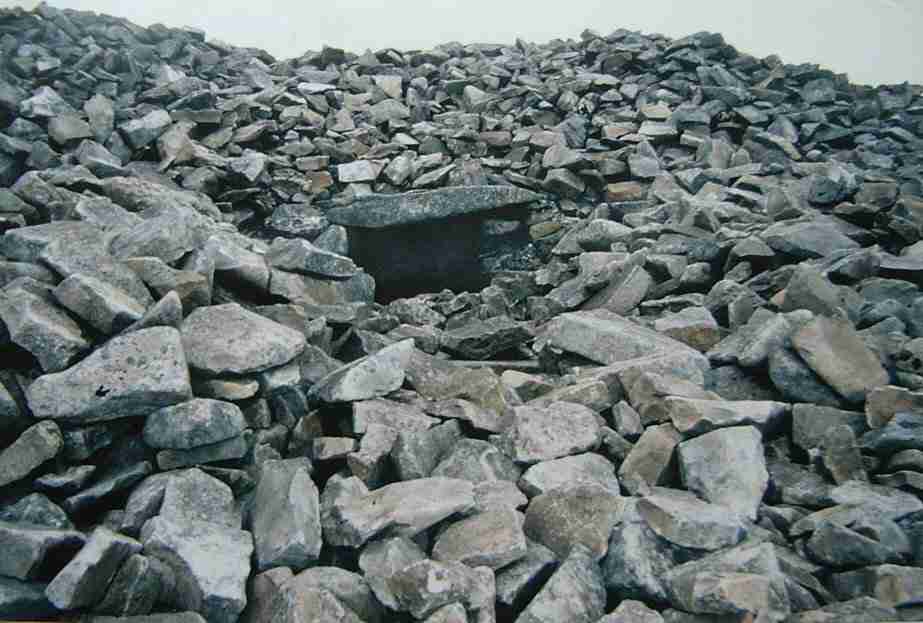

 |
Slieve Gullion Set on the northern summit of Slieve Gullion this is the highest surviving passage tomb in the British Isles. It is known locally as 'the Calliagh Berra's House'. Unusually for this type of tomb, the walls are not made with orthostats but with the sort of stones a farmer might use to build a field wall. There is a smaller dolmen built during the Bronze Age, on the southern summit of the mountain. Excavations in 1961 uncovered two small rectangular stone graves or cists within the cairn, one of which contained a cremation burial and the remains of a decorated pot known as a food vessel. Neolithic Tombs or Cairns There are four main types of neolithic (new stone age) tombs, common all over Europe. They are built with large stones, known as megaliths. Ireland contains almost half of all the megalithic tombs in the British Isles. The four types are Court Tombs, Portal Tombs, Passage Tombs and Wedge Tombs. There are no Wedge Tombs in County Armagh. Court Tombs These Tombs have three basic elements
Of the 391 court tombs in Ireland almost all are north of a line from Sligo to Carlingford. Portal Tombs Also called Dolmens - meaning 'tables', Portal Tombs comprise a single chamber constructed from three large upright stones - 'orthostats' and a capstone. The two largest stones formed the entrance, (hence the name 'portal') with a smaller stone to balance the sloped capstone. In the past these tombs would have been enclosed in a mound of earth. Passage Tombs A central burial chamber, which may have several smaller chambers leading from it is connected to the outside by a passage. The whole is covered by a, mainly round, stone or earth cairn, ringed by 'kerbstones'. |
